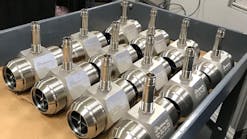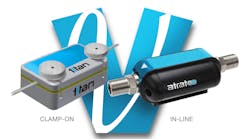Application Corner: Improper ruler placement causes flowmeter error
Previous articles described the sewage collection systems for two adjacent sewage districts and how the fourth flowmeter measured higher than the actual sewage flow, which increased the first district’s bills. In addition, the more recent installation and new transmitter eliminated some potential sources of error.
In particular, the previous one-point calibration technique under operating conditions could not check the flowmeter zero. As a result, the flowmeter zero was not checked for years. The more recent installation allowed the transmitter to be zeroed and spanned using the ruler on a sight glass connected to the purge tubing for the flowmeter primary element.
However, my findings indicated that the transmitter zero was significantly out of adjustment. How was it possible to make this determination despite flowmeter calibration being performed and witnessed by both parties every few months? The answer was quite simple: read the instructions.
The differential pressure transmitter was connected to a tap on the flowmeter primary element. The instruction manual for the flowmeter primary element indicated that the zero should be performed by closing the valve at the tap and removing a plug to allow liquid to drain down to the level that would occur under zero flow conditions. Performing this procedure revealed that the ruler used to calibrate the transmitter was positioned improperly and caused the flow measurement system to measure significantly higher than the actual flow. This resulted in significantly higher billing for the first district, especially on days when surcharges applied.
Next issue, read what happened to cause this flowmeter to be fixed.
David W. Spitzer is a principal at Spitzer and Boyes, LLC, which offers engineering, focused market research, writing/editing white papers, strategic marketing consulting, distribution consulting, seminars and expert witness services for manufacturing and automation companies. Spitzer has written more than 400 technical articles and 10 books about flow measurement, instrumentation and process control. He can be reached at 845-623-1830 or via spitzerandboyes.com.
David W. Spitzer
David W Spitzer’s new book Global Warming (aka Climate Change): An Understandable Data-Driven Explanation and Pathway to Mitigation (Amazon.com) adds to his over 500 technical articles and 10 books on flow measurement, instrumentation, process control and variable speed drives. David offers consulting services and keynote speeches, writes/edits white papers, presents seminars, and provides expert witness services at Spitzer and Boyes LLC (spitzerandboyes.com or +1.845.623.1830).


